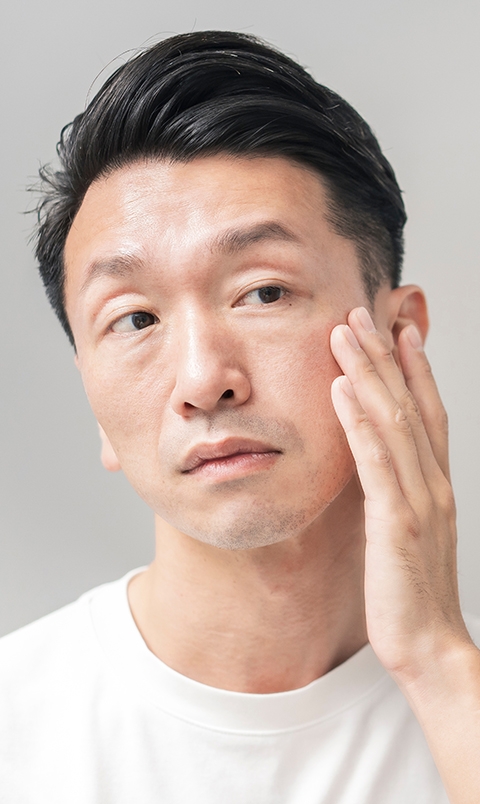A Comprehensive Guide to Treating a Lump Behind the Ear


A Comprehensive Guide to Treating a Lump Behind the Ear
10 min
Published April 24, 2025
Lump Behind Your Ear? Here’s What You Should Know
Noticed something unusual behind your ear? A lump behind your ear can spark curiosity or concern, but many common causes are harmless. This condition may be related to an infection, an allergic reaction, or simply a painless lump behind your ear.
For some, the question arises – why do I have a lump behind my ear? While most cases aren’t cause for alarm, knowing the potential causes can help you feel more at ease. This article will explore the possible reasons behind ear lumps, what they might mean, and the best steps to take if you discover one.
What That Lump Behind Your Ear Could Mean
Finding a hard lump behind your ear can feel unusual and unnerving, but narrowing down what’s potentially causing it can make things clearer.
- Painful Lump Behind Your Ear – When a lump is painful, it may point to an underlying issue like an infection or inflammation. Swollen lymph nodes are commonly the culprit, often linked to conditions like a sore throat, scalp irritations, or ear infections. Occasionally, a painful lump behind your ear could result from an abscess – a buildup of pus caused by bacteria – or, though less commonly, an infection like mastoiditis affecting the bone behind the ear. If discomfort persists, you should seek medical advice so any necessary treatment can begin without delay.
- Painless Lump Behind the Ear – Discovering a lump without pain is often less worrisome. These are frequently harmless and might include things like lipomas, which are soft, fatty tissue overgrowth, or sebaceous cysts, which are small sacs filled with keratin or oil. A painless lump can sometimes be an enlarged lymph node reacting to a mild infection. Keep an eye on any changes in a painless lump’s size, shape, or feel, and consult your doctor to rule out any concerns.
What Are the Potential Causes of Lumps Behind the Ear?
Discovering a lump on the back of the ear can catch anyone off guard, but most causes shouldn’t lead to panic. From minor skin issues to infections, many various conditions can result in these bumps. To better understand why these occur, here are some potential culprits behind a lump behind your ear bone:
- Ear infections – Ear infections are a common reason for lumps forming near or behind the ear. Conditions like otitis media or external otitis can trigger swelling in the area, often accompanied by pain, fever, or ear discharge. While ear infections are generally short-lived, it’s important to address your symptoms with a hearing doctor if they persist or worsen.
- Mastoiditis – When an ear infection spreads and involves the mastoid bone behind the ear, mastoiditis may occur. This condition can cause a painful lump coupled with fever, headaches, redness, and drainage from the ear. Mastoiditis can be serious and requires medical attention to prevent complications, so don’t hesitate to seek the medical care you likely need.
- Sebaceous cysts – These fluid-filled sacs form when sebaceous glands under the skin become blocked. Sebaceous cysts typically present themselves as soft, round lumps that may grow in size. While they’re harmless in most cases, some can become irritated or infected, leading to redness, tenderness, or increased swelling. If irritation arises, a doctor can evaluate and effectively treat the cyst.
- Swollen lymph nodes – The body’s lymphatic system often reacts to infections by enlarging your lymph nodes. When swollen, the posterior auricular nodes behind the ear may feel like small, rubbery lumps. This type of lump is typically painless and linked to conditions like skin or ear infections, resolving once the underlying issue clears. If swelling persists or becomes painful, it’s always wise to consult a medical professional.
- Lipoma – A lipoma behind the ear is a benign growth of fatty tissue that can appear as a soft, smooth lump beneath the skin. While lipomas are usually painless and harmless, they can occasionally grow large enough to cause discomfort. Removal is generally only recommended if the lipoma causes significant irritation or interferes with your day-to-day life.
- Acne – Acne doesn’t just appear on the face – it can also develop behind the ears. Blocked pores and hair follicles can lead to pimples or nodules that cause localized swelling. Though typically harmless, larger or infected acne lumps may require treatment from a dermatologist.
- Benign or malignant tumors – Rarely, a lump behind the ear bone can signal a tumor, either noncancerous or cancerous. Benign tumors are usually soft and painless, while cancerous lumps tend to feel hard and fixed in place. Symptoms such as consistent pain, sudden swelling, or accompanying signs like weight loss might warrant an immediate examination by your doctor.
How to Get Rid of a Lump Behind Your Ear
Knowing when to see an ear doctor when you notice a lump behind your ear is important. Here’s when you should be concerned about that bump:
- The lump persists beyond 2–3 weeks
- Pain, oozing, or inflammation
- Sudden appearance of the lump
- Noticeable growth in size or shape
- Hard or immovable lump in a fixed position
- Accompanying symptoms like fever, fatigue, or weight loss
Treatment will vary based on the root cause. Let's look at common treatment options depending on what’s causing that bump behind your ear:
- Abscess – Some require simple drainage to remove pus, while others may need surgical intervention and antibiotics to prevent infection.
- Sebaceous cyst – Usually harmless, but those that grow or cause discomfort are often treated by draining or removing the cyst through a simple procedure.
- Acne – Topical treatments often work, but more severe cases sometimes require prescription medications or dermatologist-approved therapies.
- Dermatitis – Over-the-counter creams or prescription ointments are typically used. If it’s triggered by a yeast infection, antifungal treatments may be necessary.
- Swollen lymph nodes – The underlying infection or cause, such as a virus or bacteria, is usually treated with antibiotics or other specific medications.
- Mastoiditis – Immediate antibiotics are critical. Severe cases might involve drainage or surgical procedures to address the infection.
- Otitis media – Most middle ear infections resolve on their own, but recurring cases may require ear tubes to drain fluid effectively.
- Cancerous tumors – Treatment depends on the type and stage of cancer and could include chemotherapy, radiation, or surgical removal.
AudioNova – Expert Ear Care You Can Rely On
Your health and peace of mind matter to us. At AudioNova, our team is dedicated to delivering the gold standard in audiological care with precision and industry-leading expertise. We’re here to provide comprehensive support and personalized solutions to address your hearing health concerns.
If you’ve noticed a lump behind your ear or have questions about the health of your ears, don’t wait to act. Schedule an appointment with an AudioNova ear doctor today and get the clear answers you deserve and the professional hearing care you can trust.




